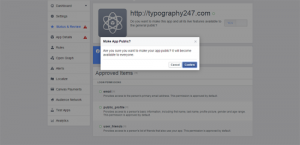Publishers See Gains In Referrals, Though Direct Traffic Is Strong
by Rob Williams , March 12, 2021
Among the news aggregators that Parse.ly tracks, Google News last year boosted referrals to media sites by 56% to 2 billion, ahead of Google’s non-search traffic, Flipboard, News Break, SmartNews and Yahoo. However, News Break logged the biggest yearly gain with a more than tenfold increase in referral traffic to 698.1 million.
Parse.ly attributes News Break’s gains to its localized updates about the pandemic.
“As more and more audiences discover News Break, it’s worth the time to examine the number of articles per category as a strong predictor for what readers want to know,” according to the report. “Flipboard and SmartNews are worth considering for the same reason.”
Parse.ly also cautioned against betting too much on emerging aggregation platforms that gain a lot of attention, such as the Chinese platform TopBuzz/Toutiao did in late 2019. Its traffic faded throughout last year.
“Keep your focus on platforms that have proved their staying power, but feel free to experiment on other platforms to see if you get results and set clear expectations,” Parse.ly advised.
As for internet search, Google boosted referrals to media sites by 41% to 27.2 billion, dwarfing rivals like Bing, Yahoo! and DuckDuckGo. However, DuckDuckGo’s growth rate of 44% to 133.4 million referrals was the strongest in the search category.
Among social networks, Facebook boosted referrals to media sites by 51% to 14.6 billion, also towering above rivals, such as Twitter, Pinterest and Microsoft-owned LinkedIn. Facebook’s photo-sharing app Instagram saw the highest growth rate in referrals at 68%.
Referral traffic from Twitter grew 22%, but Parse.ly suggests the traffic is likely concentrated among a narrow audience, citing a Pew Research Center study that showed 10% of Twitter users produced 92% of all tweets. Among that top decile of tweeters, 69% were Democrats while 26% were Republicans.
Despite those gains in search and social media referrals, the biggest source of traffic came from direct, including “dark sources” such as email, messaging or apps that send referral information. Direct referrals made up 28% of sources of traffic for media sites, compared with 25% for search, 15% for social and 9% for the “other” category including aggregators, according to Parse.ly.
“Direct traffic has grown substantially as a category, surpassing search referrals, as well as the total traffic from readers clicking around on a site,” the report said.
>(25)





